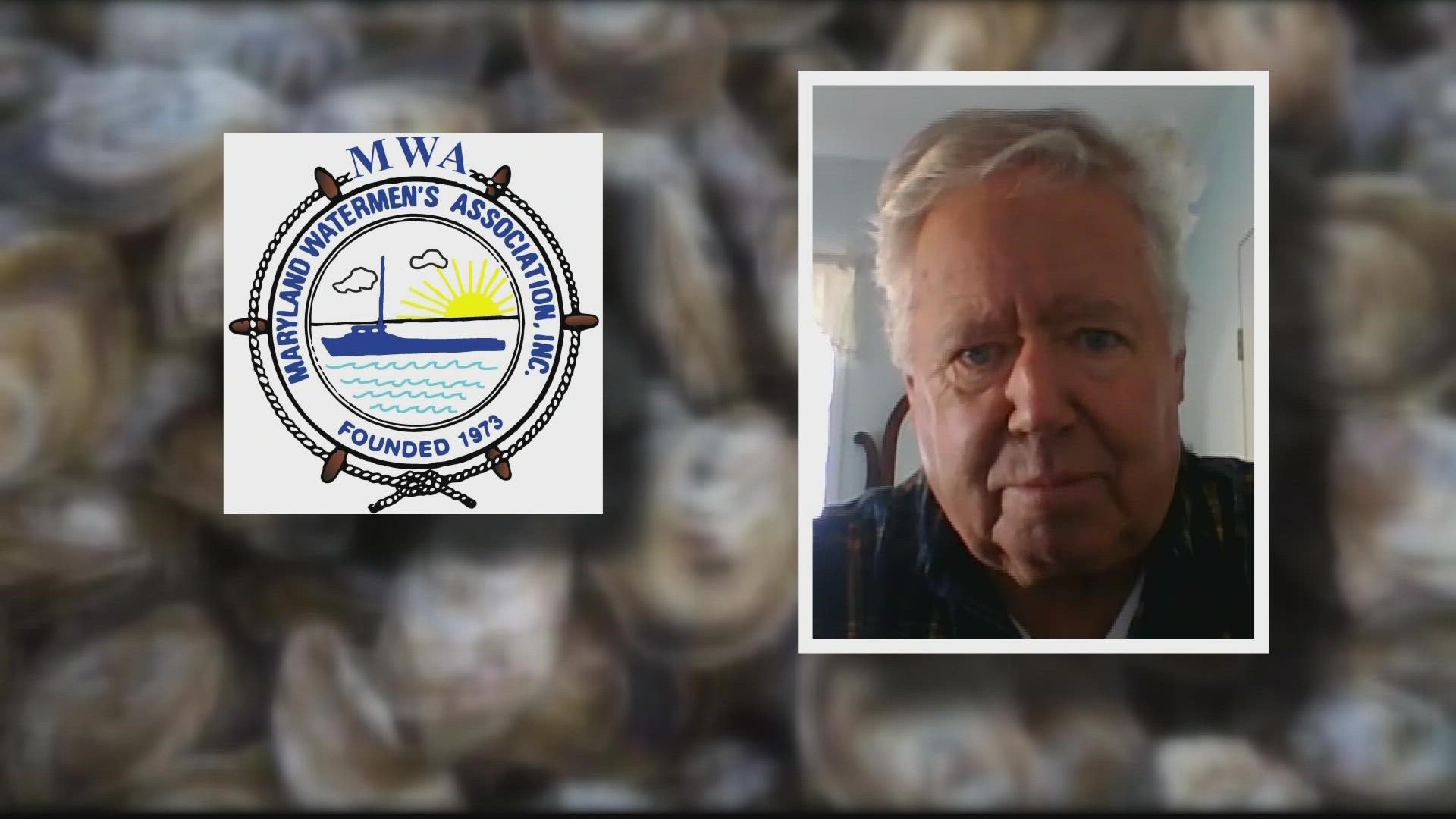ST. MARY'S COUNTY, Md. — Watermen in St. Mary’s County, Maryland are applauding Maryland’s Attorney General for suing the wastewater authority in the county. A sewer spill last year may have contaminated oysters that made people sick, according to the Attorney General.
But chronic sewage spills in St. Mary’s County have been happening for at least five years, according to a new lawsuit filed by Attorney General Brian Frosh this week against the County's Metropolitan Authority, known as MetCom.
The suit claims there have been at least 58 sanitary sewer spills since 2017, although the complaint leaves out the spill from last October when people likely got sick from St. Mary’s oysters.
Maryland Waterman's Association President Robert Brown raises oysters in St. Mary’s County and says the lawsuit is a step toward cleaning bay waters and ensuring seafood safety.
"I'm glad to see it because we've had so many spills here over the past couple of years," Brown said. "Every time we have one of these spills it interferes with our seafood industry and may stop us from harvesting oysters sometimes. But also every time you have one of these spills it's a degradation to the quality of the water in the Chesapeake Bay.”
Attorney General Frosh said the lawsuit aims to force MetCom to stop spills and upgrade equipment.
“We have charged MetCom with multiple violations of the most fundamental laws that protect public health and the environment,” Frosh said in a statement. “Releasing raw sewage could not be more dangerous. We will hold them accountable.”
In the wake of the Oct. 2021 spill that may have been linked to a disease outbreak, state authorities admitted they failed to order an emergency waterway closure in time to stop area watermen who were unaware of the spill from harvesting oysters.
Brown says since then state authorities have reacted quickly to spills.
"At the present time, we haven't had a problem with it," Brown said. "We had a spill here and it was shut down the next morning. The marine police were there and wouldn't let anybody work in that area. So they did a good job on that.”
Brown says oysters harvested in the county are safe.
MetCom's system serves about 18,000 St. Mary's County residents and some of the infrastructure dates to the 1960s, according to George Erichsen, the utility's executive director.
Much of the system is near sea level, dependent on pumping stations and prone to flooding.
Since the Oct. 2021 incident, Erichsen reported many pumping stations have had equipment raised to prevent flood impacts.
“All sanitary sewer overflows that occur are reported to the State within 24 hours as required by the Code of Maryland Regulations as well as the local Health Department," Erichsen wrote in a statement.
"Measures taken to minimize the impact of the discharge are also reported and any corrective or remedial actions that may be required above what was already accomplished are completed under the supervision and in cooperation with the Maryland Department of the Environment," he added.
WUSA9 reached out to the Maryland Department of Environment, who confirmed there are no active emergency/spill-related closures at this time in Maryland. The most recent closure happened in January.
The department's full statement can be read below:
There are no active emergency/spill-related closures in Maryland at this time.
That closure was lifted in February, following the rule that an area must remain closed for 21 days after a sewage spill stops. Note the passage at the end of the update on the bottom of the release: The closure affects four Potomac Rivers Fisheries Commission (PRFC) oyster bars in the Potomac River. MDE has confirmed with PRFC that no harvest in this portion of the river is occurring this season.
Last month, MDE did take immediate action to close a portion of the St. Mary’s River to shellfish harvesting, NOT due to a spill but, rather, following a report of damage to a wastewater treatment plant outfall pipe. Details on that.
We have no information or facts that oysters were harvested from the prohibited area. The closure is in effect, and will remain so until 21 days after repairs are made. The Navy was expected to make an assessment of the damage this week.
A water utility warned last month that an overwhelmed sewage system sent more than 25,000 gallons of waste into a Potomac River tributary.

